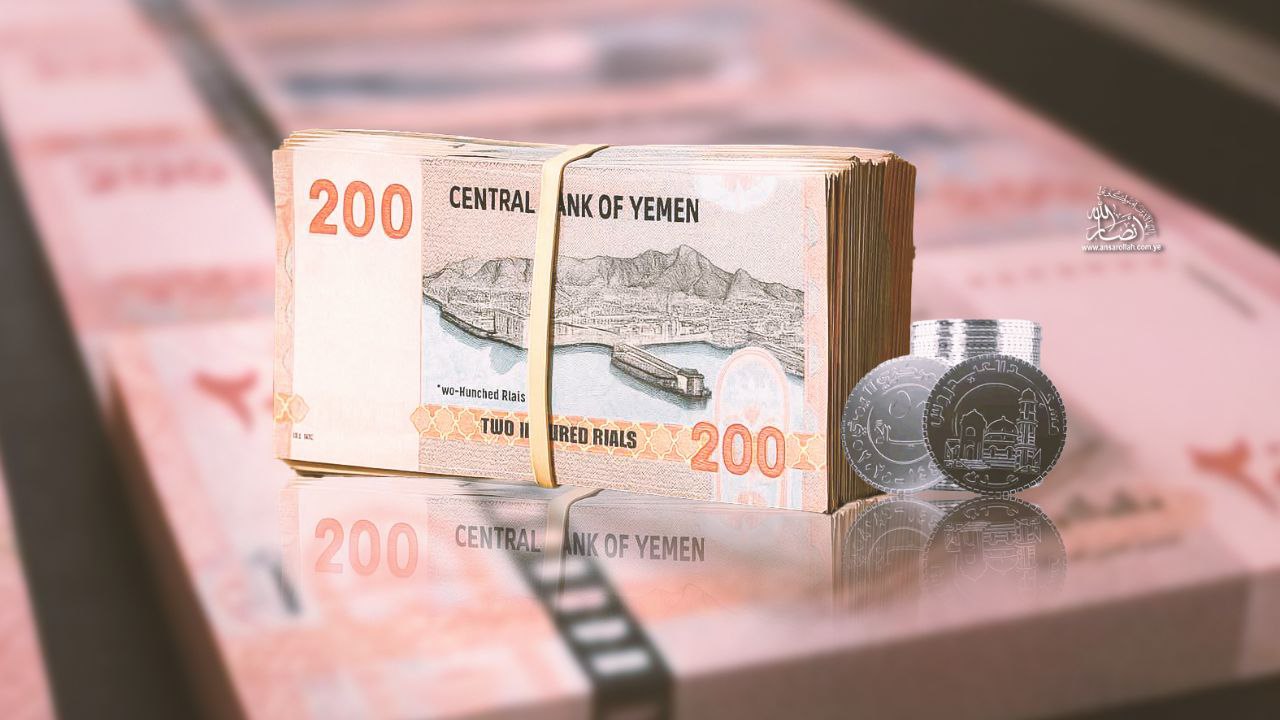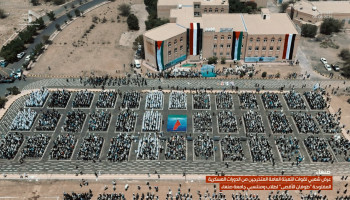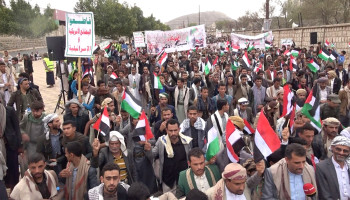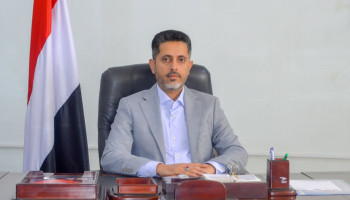Ansarallah’s Official Website Interviews Economic Expert Rashid Al-Haddad on Currency Issuance and Its Economic and Political Implications.
Al-Haddad provided a comprehensive analysis of the motivations behind the issuance of new currency, exploring its economic and political dimensions as well as its anticipated impact on the local market and the broader financial landscape.
Al-Haddad discussed the future of the Yemeni riyal, the importance of monetary sovereignty, and the stance of the Government of Change and Construction regarding peace demands.
Interview conducted by Mohammed Al-Matari
■ What is your interpretation of the decision to issue the 50-riyal coin and the 200-riyal banknote?
This step demonstrates the Central Bank in Sana’a’s capability to confront ongoing challenges and respond effectively to the realities of the financial sector. The issuance is not intended to increase the money supply, as the mercenary government in Aden is attempting to do. Instead, it serves as a replacement process, where new currency replaces damaged notes of the same nominal value and purchasing power.
■ Is the motive purely technical, or are there other dimensions involved?
While the technical aspect is significant—especially in addressing the severe deterioration of circulating cash—there are also clear sovereign and political considerations. The currency issuance challenges US sanctions and asserts the independence of the Central Bank in Sana’a as a sovereign institution dedicated to Yemen’s interests, rather than serving foreign agendas.
■ Does this step represent an actual increase in the money supply?
No. This action reinjects denominations that had nearly vanished from circulation. There is no real inflationary increase; rather, it is a recycling of worn-out currency.
■ What is the expected impact of this step on inflation and exchange rates?
The issuance is expected to enhance liquidity and reduce commercial contraction. It should not negatively affect the exchange rate or inflation; on the contrary, it will support market stability.
■ How do you respond to claims that this measure will lead to inflation?
Such claims are unscientific. Inflation occurs when money is injected without backing, as the Central Bank in Aden has done. The measures taken in Sana’a were carefully prepared, professionally executed, and based on precise standards, aimed solely at addressing market needs.
Monetary Division and the Risks of Financial Parallelism
■ What is the impact of these issuances on the relationship between the Central Banks of Sana’a and Aden?
The division began in 2016 with the transfer of the Central Bank’s functions to Aden, accompanied by massive unbacked money printing. Sana’a adhered to sound monetary policies, and what we see today in terms of issuances is merely an attempt to correct the internal situation, not a cause of the division.
■ Does this indicate further monetary divergence?
The divergence already exists, evidenced by the huge exchange rate gap between Sana’a and Aden, which exceeds 2,400 riyals per dollar. This divergence is unrelated to the issuance of the 50 or 200 riyal notes, but rather a direct result of the failure of monetary policy in Aden.
■ What effect does this divergence have on the citizens?
The impact is significant, especially on traders and workers moving between governorates. Sending money from an occupied governorate to Sana’a may result in losing more than 80% of its value, deepening the livelihood crisis and disrupting commercial activity. It is important to note that this divergence existed before the issuance of the 50-riyal coin and the printing of the 200-riyal note.
Local Market and Public Confidence
■ How was the local market’s reception of the new coin?
The response was excellent, as the market was eager for these denominations. The new currency was locally minted with high quality and according to the highest specifications.
■ Will this positively affect citizens’ transactions?
Certainly, it will help facilitate daily transactions and reduce the market’s reliance on worn-out currency, positively reflecting on liquidity and convenience in cash dealings.
Technical Aspects and Security Features
■ Do the new currencies include security features against counterfeiting?
Yes, the currencies were equipped with precise security features, including a laser strip and hidden marks, meeting international standards to prevent forgery.
■ Do these issuances comply with international currency minting standards?
Absolutely. The Central Bank fully adhered to international standards in design and printing, ensuring that no entity—including the United States—can challenge the legality of this currency or claim it is counterfeit.
Monetary Policies and the Future of the Riyal
■ Is the issuance part of a well-thought-out policy or just a temporary fix?
It is part of a comprehensive and deliberate monetary strategy aimed at restoring market balance. This is not a short-term solution. The Central Bank is implementing long-term, structural measures—not reactive or improvised decisions.
■ How can this step support monetary stability?
By upholding a disciplined monetary approach, supplying the market with essential denominations, curbing speculation, and stabilizing the exchange rate. These measures reinforce confidence and directly serve economic resilience.
■ How do you assess the future of the national currency?
The future of the riyal hinges on whether the aggressor states honor peace agreements. Nonetheless, the Government of Change and Construction is actively working to protect the Yemeni riyal and reassert its role as a unified, sovereign currency for all Yemenis. This process is already underway, as seen in its growing circulation and acceptance in the southern governorates.
Closing Statement from Economic Expert Rashid Al-Haddad:
“Through the Ansar Allah official website, we affirm that the monetary authority under the Government of Change and Construction remains open to any economic understandings that truly serve the people’s interests. However, it will not remain silent in the face of the deliberate financial collapse in the occupied governorates or the ongoing American economic blockade.”
“We will continue to safeguard our national currency and confront the liquidity crisis—regardless of the scale of external pressure. The fact that the United States disapproves of this move is the clearest proof of its correctness and effectiveness.”







